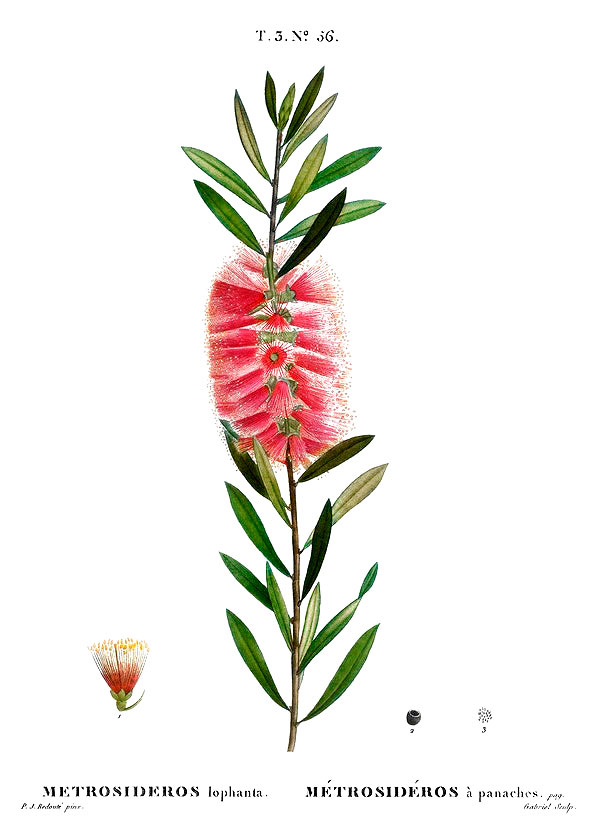Bottlebrush

Origin: Australia
Family: Myrtaceae
Subfamily: Myrtoideae
Tribe: Melaleuceae
Scientific Name: Previously Callistemon spp.
Indigenous (Noongar) Names: Birdak (M. phoenica aka C. phoenicus)
Magical
Element: Fire
Direction: North
Day: Tuesday
Planet: Pluto
Zodiac: Scorpio
Parts Used: Flowers, leaves
Magical Properties: Love, easing transitions, change, peace, major life changes, resilience
Substitutions: Yew (Druidic Ogham equivalent)
Practical
The sweet nectar is either sucked directly from the flowers, or the flowers are soaked in water to make a sweet drink (called mangite or mungitch by the Noongar people). This liquid was sometimes fermented to make an alcoholic beverage (gep).
Botanical
Of the 30-40 bottlebrush species, all but 4 are endemic to Australia.
While the Callistemon genera has officially been absorbed into Melaleuca, whether this is appropriate is still debated, and many refuse to acknowledge the decision.
Type: Evergreen shrubs
Plant size: 0.5-4m
Leaves: Long, narrow, mid-to-dark green leaves (can be spiky). New leaves are often coloured and/or soft and velvety.
Flowers: Kambarang to bunuru: Multiple flowers make up a dense cylindrical spike, resembling a brush used for cleaning bottles. Flowers are arranged in groups of 3 - the stamens have yellow tips (anthers) and the stalks (filaments) are usually red, but can also be yellow, cream, or pink/mauve.
Fruit: Woody fruits, usually cup/barrel/spherical-shaped capsules, arranged in clusters along the stems. The fruits often remain for several years and take a year or more to drop seeds.
Etymology: From the Greek kallistos for “very beautiful” and Latin stema for “thread or stamen”.
In the Garden
Type: Perennial shrub
Light: Full sun to partial shade
Water: Most species prefer regular watering
Soil: Well-draining
Tips:
- Flowers best in full sun.
- Does not like alkaline soils.
- Plants can be lightly pruned after flowering to keep them in shape.
- A low-phosphorous fertiliser should be applied in spring and autumn.
- Drought-tolerant once established.
- Mulching will help retain soil moisture and reduce weed growth.
